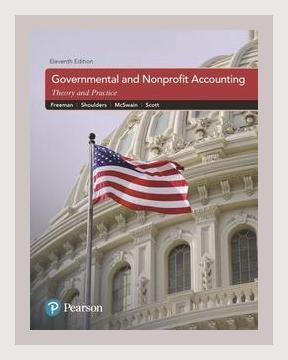Finance and AccountingAuditing
Introduction
“Governmental and Nonprofit Accounting” by Freeman et al. provides an in-depth examination of the specific principles, practices, and standards that govern financial accounting in public sector and nonprofit organizations. The text distinguishes itself by marrying practical application with theoretical grounding to guide auditors, accountants, and financial managers in these segments. This summary aims to flesh out the book’s primary themes, sub-sections, and practical advice with explicit examples from the text.
1. Foundations of Governmental and Nonprofit Accounting
The first section establishes why governmental and nonprofit organizations require unique accounting standards. The authors stress the importance of transparency, accountability, and compliance with statutory requirements.
- Example: The American Institute of Certified Public Accountants (AICPA) and Governmental Accounting Standards Board (GASB) guidelines are foundational.
- Action: Utilize GASB Statement No. 34 guidelines when preparing comprehensive financial reports to ensure clarity and compliance.
2. Financial Reporting for Governmental Entities
The authors detail the types of financial statements required for governmental entities, including government-wide financial statements and fund financial statements.
- Example: The City Comprehensive Annual Financial Report (CAFR) includes a Management’s Discussion and Analysis (MD&A), government-wide financial statements, and notes to the financial statements.
- Action: Prepare an MD&A for your governmental entity’s CAFR to summarize the financial activities and condition, enhancing reader understanding.
3. Fund Accounting
Fund accounting segregates resources into separate accounts to ensure legal adherence and demonstration of appropriate fund usage.
- Example: Governmental funds, proprietary funds, and fiduciary funds are highlighted. The general fund for general government operations, special revenue funds for specific purposes, and enterprise funds for business-type activities.
- Action: Implement a robust chart of accounts that reflects fund accounting principles for your nonprofit or governmental entity to enhance tracking and reporting accuracy.
4. Budgeting
Governmental and nonprofit organizations use budgeting as a fundamental tool for financial planning and control.
- Example: The authors describe the appropriations budget, capital budget, and flexible budget. A state government might use an appropriations budget to ensure expenditures do not exceed legislative authority.
- Action: Develop both operating and capital budgets aligned with strategic priorities and statutory requirements to exercise fiscal discipline.
5. Revenue Recognition
Revenue recognition principles for non-exchange transactions, such as taxes and grants, differ from those in private sector accounting.
- Example: GASB Statement No. 33 outlines revenue recognition for imposed non-exchange transactions like property taxes and voluntary non-exchange transactions like grants.
- Action: Apply GASB 33 rules to correctly recognize revenue from grants and donations, ensuring accurate financial reporting and compliance.
6. Expenditure and Expense Recognition
Accurate recognition of expenses is critical for financial accountability.
- Example: In governmental funds, expenditures are recognized when the related liability is incurred, but proprietary funds recognize expenses on an accrual basis.
- Action: Ensure your financial systems can differentiate between fund types to appropriately record expenditures and expenses.
7. Capital Assets and Long-term Liabilities
Reporting of capital assets and long-term liabilities ensures transparency in representing the entity’s financial position.
- Example: Depreciation of infrastructure assets is required under GASB 34. Capital assets should be recorded at historical cost and depreciated over their useful lives.
- Action: Implement a systematic process for tracking, capitalizing, and depreciating capital assets to maintain accurate financial records.
8. Auditing Governmental and Nonprofit Entities
Auditing in this context involves both external and internal reviews to ensure financial accuracy and compliance.
- Example: The Yellow Book provides auditing standards for governmental entities. For instance, a state auditor might undergo a comprehensive audit in line with these standards.
- Action: Conduct regular internal audits and employ external auditors to review financial statements for compliance with the Yellow Book standards.
9. Internal Controls
Effective internal controls mitigate risks and enhance financial accountability.
- Example: The COSO Framework is recommended for establishing internal controls. A local government might employ segregation of duties to avoid conflicts of interest.
- Action: Develop and implement robust internal control systems based on the COSO framework, ensuring segregation of duties, adequate authorization, timely reconciliation, and accurate documentation.
10. Financial Analysis
Financial analysis tools and ratios are vital for assessing the financial health of governmental and nonprofit entities.
- Example: Analysts might use liquidity ratios, solvency ratios, and profitability ratios tailored for nonprofit organizations. For example, the current ratio assesses the entity’s ability to cover short-term obligations.
- Action: Regularly calculate and monitor key financial ratios to assess and report on your organization’s financial sustainability and operational efficiency.
11. Performance Measurement
Performance metrics beyond financial statements can provide deeper insights into operational efficiency and program effectiveness.
- Example: Key performance indicators (KPIs) in public health organizations might include metrics on patient outcomes and service delivery efficiency.
- Action: Develop and integrate performance measurement systems to track and report on both financial and non-financial outcomes, aiding in strategic decision-making and resource allocation.
12. Ethical Considerations in Governmental and Nonprofit Accounting
Ethics play a critical role in maintaining public trust and integrity in financial reporting.
- Example: A code of ethics might include guidelines for conflict of interest, transparency, and stewardship. The Institute of Management Accountants (IMA) provides a framework for ethical practices.
- Action: Establish and train staff on a comprehensive code of ethics to promote ethical behavior and decision-making within your organization.
Conclusion
In summary, “Governmental and Nonprofit Accounting” by Freeman et al. equips readers with the necessary tools to navigate the complexities of accounting in governmental and nonprofit sectors. The blend of practical examples and actionable advice provides a robust framework for maintaining financial integrity, ensuring compliance, and enhancing transparency and accountability in public finance. By adhering to the standards and principles outlined in the book, individuals can significantly contribute to the financial health and operational success of their respective organizations.
